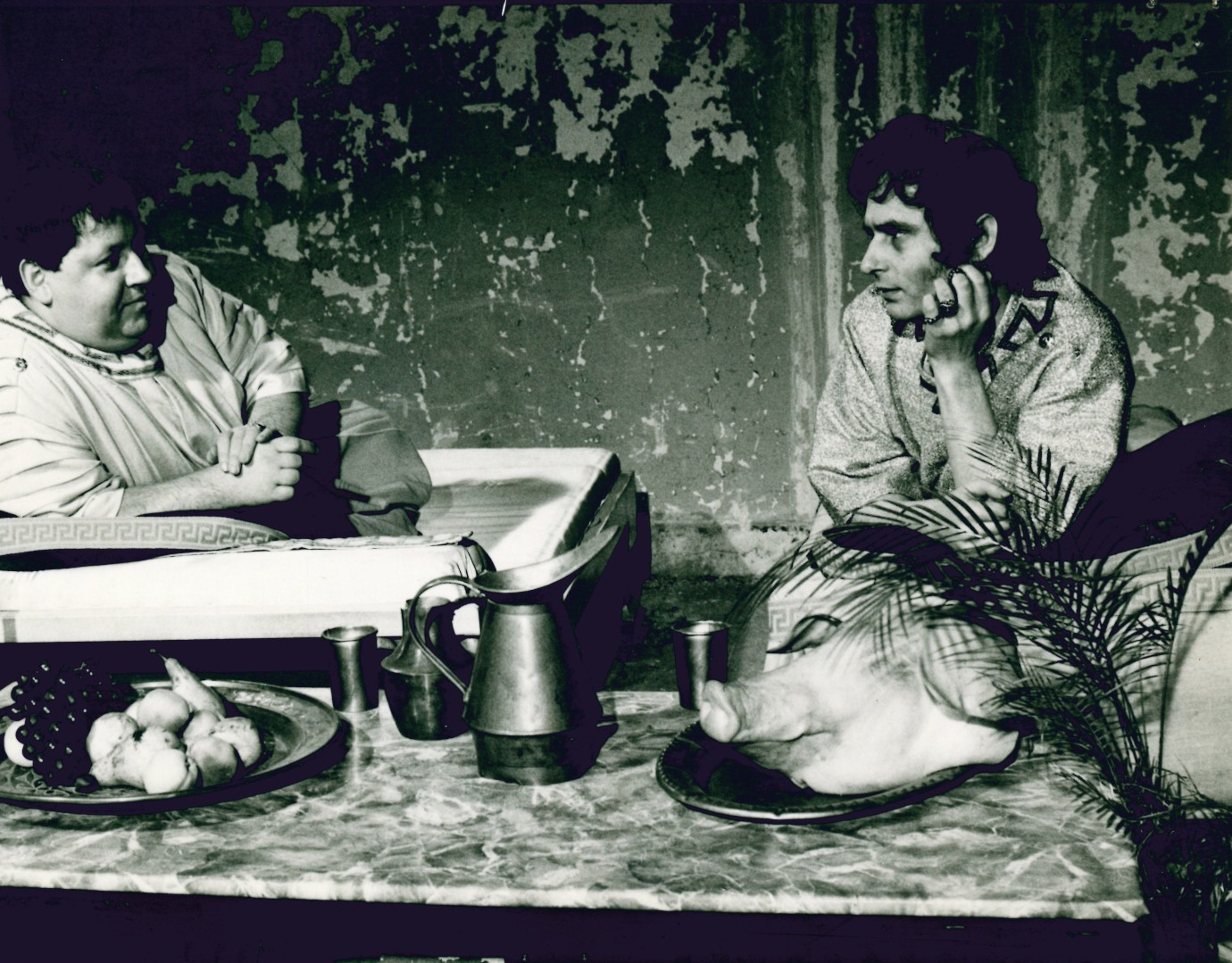
Eine Sache, die sich versteht (15x) | Something Self Explanatory (15x) by Hartmut Bitomsky, Harun Farocki
BRD 1971, Forum
With
- Rolf Becker
- Herbert Chwoika
- Norbert Langner
- Kurt Michler
- Ingrid Oppermann
- Falk Rebitzki
- Peter Schlesinger
- Angelika Wehbeck
Crew
| Written and Directed by | Hartmut Bitomsky, Harun Farocki |
| Cinematography | Carlos Bustamante, David Slama |
| Editing | Hasso Nagel |
| Sound | Johannes Beringer |
Produced by
Larabel Film Harun Farocki
Hartmut Bitomsky
Born in Bremen in 1942. He studied Theatre Studies, German Studies, Journalism and Film Studies. Starting in 1970, Bitomsky worked freelance as a writer, director and producer. From 1974 to 1985, he was an editor of the magazine "Filmkritik". Bitomsky has also worked as a lecturer at art and film schools since the early 1990s. From 2006 to 2009, he was director of the DFFB.
Filmography
1967 3000 Häuser; 17 min. 1970 Die Teilung aller Tage; 67 min. 1975 Auf Biegen oder Brechen; 94 min. 1976 Der Schauplatz des Krieges. Das Kino von John Ford; 91 min. 1981 Highway 40 West; 169 min. 1986 Reichsautobahn; 91 min., Forum 1986 1988 Das Kino und der Tod; 46 min. 1989 Der VW Komplex; 93 min. 1991 Isaak Babel – Die Reiterarmee; 27 min. 1992 Die UFA; 88 min. 2001 B-52; 122 min., Forum 2001 2007 Staub; 94 min.
Bio- & filmography as of Berlinale 2020
Harun Farocki
Born in Nový Jičín, today the Czech Republic, in 1944. From 1966 to 1968, he studied at the German Film and Television Academy Berlin. He directed more than a hundred films for television and cinema. From 1974 to 1984, Farocki was an editor and author of the magazine "Filmkritik". Starting in 1996, his films and installations were shown in a large number of solo and group exhibitions in museums and galleries. From 2004 to 2011, he was professor for Film and Art at the Academy of Fine Arts Vienna. Farocki died in 2014.
Filmography (selection)
1967 Die Worte des Vorsitzenden (The Words of the Chairman); 3 min. 1969 Nicht löschbares Feuer (Inextinguishable Fire); 25 min., Retrospective 2002 1978 Zwischen zwei Kriegen (Between Two Wars); 83 min. 1984 Peter Lorre – das doppelte Gesicht (The Double Face of Peter Lorre); 59 min. 1982 Etwas wird sichtbar (Before your Eyes Vietnam); 114 min. 1986 Wie man sieht (As You See); 72 min. 1988 Bilder der Welt und Inschrift des Krieges (Images of the World and the Inscription of War); 75 min. 1991 Was ist los? (What's Up?); 60 min. 1990 Leben – BRD (How to Live in the FRG); 83 min. 1992 Videogramme einer Revolution (Videograms of a Revolution); with Andrei Ujica, 106 min. 1995 Arbeiter verlassen die Fabrik (Workers Leaving the Factory); 36 min. · Schnittstelle (Interface); video installation, 23 min. 1996 Der Auftritt (The Appearance); 40 min. 1997 Die Bewerbung (The Interview); 58 min. 2000 Ich glaubte Gefangene zu sehen (I Thought I was seeing Convicts); video installation, 23 min. 1997 Stilleben (Still Life); 56 min. 2001 Die Schöpfer der Einkaufswelten (The Creators of Shopping Worlds); 72 min. · Auge / Maschine (Eye / Machine); video installation, 23 min. 2002 Auge / Maschine II (Eye / Machine II); video installation, 15 min. 2003 Erkennen und Verfolgen (War at a Distance); 58 min. · Auge / Maschine III (Eye / Machine III); video installation, 25 min. 2004 Gegen‑Musik (Counter Music); video installation, 23 min. 2005 Aufstellung (In-Formation); video installation, 16 min. 2004 Nicht ohne Risiko (Nothing Ventured); 50 min. 2005 Ausweg (A Way); video installation, 14 min. 2006 Zur Bauweise des Films bei Griffith (On Construction of Griffith’ Films); video installation, 9 min., Forum Expanded 2006 · Arbeiter verlassen die Fabrik in elf Jahrzehnten; video installation, 36 min. 2007 Vergleich über ein Drittes; video installation, 24 min. · Deep Play; video installation, 15 min. 2008 Fressen oder Fliegen; video installation, 24 min. 2009 Ernste Spiele III: Immersion; video installation, 20 min. · Zum Vergleich (In Comparison); 61 min. 2012 Ein neues Produkt (A New Product); 37 min. 2013 Sauerbruch Hutton Architekten; 73 min. 2014 Parallele I–IV (2012–2014); video installation
Bio- & filmography as of Berlinale 2020